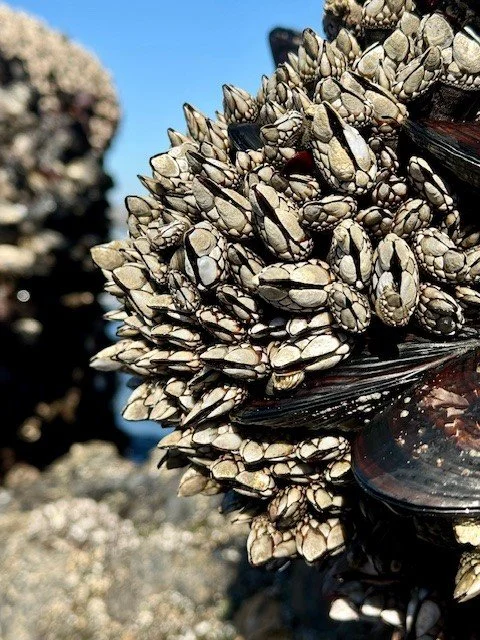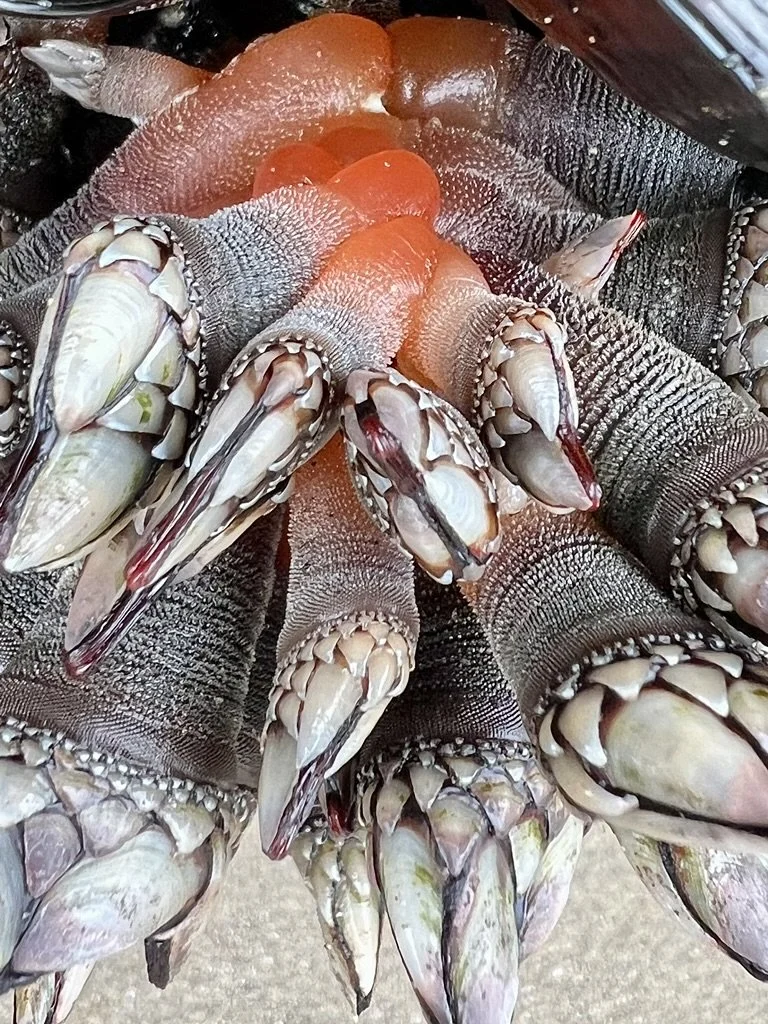Gooseneck Barnacle (Pollicipes polymerus)
Gooseneck barnacles (photo credit: Jenny Gooldy)
Gooseneck barnacle stalks (photo credit: Michelle Schwegmann)
Description: The gooseneck barnacle is a species of stalked barnacle also known as leaf barnacle or goose barnacle. The stalks (or peduncles) of gooseneck barnacles look sort of like leathery skin and are dark gray-brown in color. On the ends of these stalks are the white protective plates that guard the soft internal parts of the animal. This armor consists of five main larger plates and multiple smaller ones. On average, this part of the barnacle is a little over 4 cm long, while the stalks can reach up to 15 cm in length.
Habitat: This species is found in the intertidal zone from southeast Alaska down to Baja California, Mexico. They’ll attach to various hard surfaces, like rocks or even mussels.
Diet: Like other barnacle species, the gooseneck barnacle feeds by extending its feathery feet (cirri) out of its protective plates while underwater to catch plankton.
Tide Pool Tidbits:
Gooseneck barnacles get their name because their long stalks and pointy protective plates resemble a goose’s neck and beak.
They can breed and brood their young up to four times a year with each brood containing up to 20,000 individuals.
Indigenous populations along coastlines have long harvested these edible gooseneck barnacles; apparently, the flesh within the stalk tastes similar to lobster.
There is currently only one gooseneck barnacle fishery in North America, located on Vancouver Island in Canada, and it’s considered sustainable!
Reference: Walla Walla University



